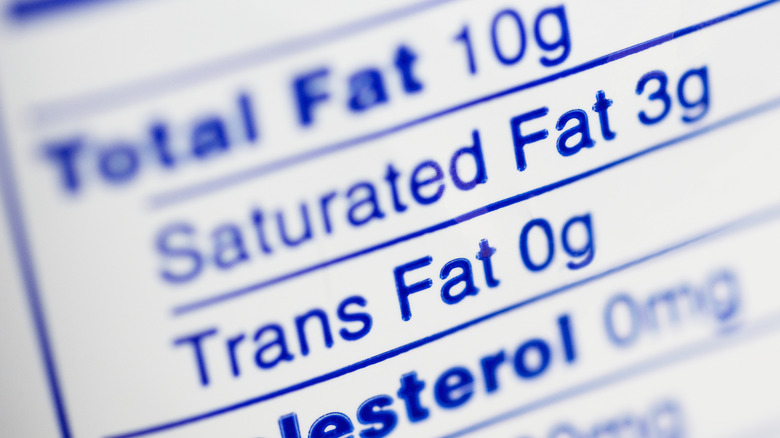9 Myths About Gelatin Everyone Surprisingly Believes
While you may not have purposely consumed or used gelatin in your cooking, odds are you have encountered it before without even knowing. (Think Jell-O, named aptly for gelatin content or making soup broth or sauce). Derived from the Latin word gelatos meaning "stiff or frozen", this versatile ingredient is a controversial topic, as commercial gelatin is made from the protein collagen. Gelatin has been used for more than 125 years in the food industry and is generally recognized by the Food and Drug Administration as being safe for consumption. Beyond being the main ingredient of the fan favorite dessert, gelatin has many uses in cooking and even some purported health benefits. Gelatin is commonly used as a thickening agent or gelling for foods.
However, there are some commonly believed myths about gelatin that may have you questioning your affinity for gelatinous desserts and whether gelatin is the right product for you. We have busted these surprising myths about gelatin to educate you about the uses of this cooking staple, its positive and negative attributes, and found the facts so you go into your grocery store fully armed with knowledge.
1. Myth: Gelatin no longer is made with animal bones
Claims about Jell-O being made with animal bones sent shockwaves through the internet. There is some lingering discrepancy if gelatin (specifically Jell-O) still contains animal products. "Gelatin, the primary ingredient in Jell-O, is derived from collagen, a protein found in the connective tissues, bones, and skin of animals," Mary Sabat, MS, RDN, LD, a nutritionist and owner of BodyDesigns told USA Today. "Historically, gelatin was obtained by boiling the bones and tissues of animals, such as cows or pigs, to extract collagen. However, modern commercial gelatin production may involve various processes, including acid or alkali treatment, to extract collagen from animal by-products like hides, bones, or connective tissues."
Researchers say the collagen used in gelatin is primarily sourced from pig skin, as well as cow skins, demineralized hooves, and bones. Fish and poultry by-products have also been used, as concerns with diseases in cattle like "mad cow disease" arose. So, while there may be other options for gelatin that are animal product-free (more on that later), gelatin still contains collagen which typically is made with animal by-products.
2. Myth: Gelatin acts as an immediate wrinkle-reducer
Many people are on the hunt to find natural ways to look younger — especially when it comes to skincare. But before you go adding gelatin to your nightly skincare routine, hang tight as we discuss how impactful gelatin can be on our body's collagen. The protein collagen makes up a significant part of our bones, skin, hair, and nails, and we start losing it as we age. When we lose collagen, we lose elasticity, which can result in wrinkles on the skin and brittle hair or nails.
While there are some studies that gelatin can improve skin hydration, resulting in a reduction of wrinkles, it shouldn't be thought of as a miraculous wrinkle-fighter. That being said, gelatin is beneficial for skin and hair acting as a stimulant for collagen production. So, you will likely see many beauty products or supplements that aim to boost collagen. As a result of increased collagen, hair and nails can be strengthened, and become less brittle and more resistant. It should be noted that results can vary and take some time to surface, so gelatin isn't necessarily a foolproof wrinkle-reducer as many people may believe.
3. Myth: Gelatin has no nutritional value
Knowing that gelatin is typically produced by animal byproducts may have you feeling like there is no nutritional benefit. However, gelatin in pure powder form is high in protein (100 grams of dry gelatin powder contains more than 85 grams of protein), a necessary macronutrient. It also contains amino acids like lysine, which helps our body absorb calcium and strengthen our bones. While gelatin may not be for vegetarians or vegans, it is able to be consumed by those with gluten sensitivities, as it is gluten-free.
Gelatin is also an ingredient in many low-fat and low-calorie dairy products like low-fat margarine or milk, as it acts as a replacement for fat, while not impacting the taste (as it is flavorless) or texture. The low-calorie, high-protein combination can be ideal for weight loss, but there are times gelatin is unhealthy due to the other ingredients in the products it is used in. Many gelatin-based foods (especially desserts) have high sugar content, counteracting some of the nutritional benefits. Sticking to gelatin products with low sugar amounts is ideal for weight loss.
4. Myth: Gelatin heals joint pain
Joint pain is a huge complaint as the aging process begins and ailments like arthritis, or joint inflammation, pop up. Gelatin contains the collagen protein that supports joint health. There are studies that gelatin could help with joint pain and swelling in those with arthritis, as the proteins can accumulate in the cartilage after consumption. While gelatin can reduce pain and stiffness, it shouldn't be thought of as a cure for arthritis. Many assume that consuming more collagen would send collagen straight to your joints. But in reality, the collagen in gelatin gets broken down when you eat it and does not necessarily make it directly to your joints.
While gelatin is a cooked form of collagen, gelatin should not be used interchangeably with it. It should also be noted that collagen is typically used as a nutritional supplement more commonly than gelatin. Consulting with your health team about how collagen can improve your joint pain is imperative.
5. Myth: Gelatin can heal digestive issues
Many of us have had Jell-O when recovering from an illness or surgery. While gelatin can be soothing during recovery, it shouldn't be thought of solely as a gastrointestinal treatment. Factors like diet and lifestyle are considered when treating gastrointestinal illnesses. A medical professional should weigh in on if gelatin is a helpful treatment plan addition.
That's not to say that gelatin doesn't have its perks in regard to our gut health. In fact, numerous studies conducted have found some benefits to gelatin. Gelatin contains amino acids that coat the gastrointestinal tract, which in turn can reduce irritation and improve digestion. In one study by Moscow State Lomonosov University, proteins were found to support the intestinal wall by building a protective lining. Research also found that gelatin peptides helped reduce the cytokines that contribute to gut inflammation in people with inflammatory bowel disease. However, more research is needed to determine gelatin's role in producing a healthy gut microbiome.
6. Myth: Gelatin is only used in desserts
When you think of gelatin, you likely immediately think of Jell-O or another sweet dessert. However, gelatin can have many other uses in cooking and food product development than just in desserts. Powdered gelatin is commonly used for cold dishes, and it can be dissolved in liquids or in broths and sauces. Gelatin is also present in dairy products like yogurt to prevent separation. Canned meat products and cold meats leverage gelatin as an emulsifier to give the end product an appetizing appearance and texture.
That's not to say that some of our favorite sweet treats wouldn't be possible without gelatin. Gelatin helps in the production of chewing gum, candy, and marshmallows. You may also find that gelatin is a key ingredient in toppings, sauces, or fillings to stabilize mousses or creams. The gelatin has a stabilizing effect that gives dishes the desired texture and flavor.
7. Myth: All forms of gelatin are interchangeable
Once you start looking into adding gelatin to your cooking repertoire, you will find that there is more than just one offering. Gelatin comes in powdered form, sheets, and in leaf form. Powdered gelatin is dried gelatin broken down into individual grains, which may mix more easily into a dish than other options. If you use a gelatin leaf, it is already portioned out for use. Gelatin sheets are made from gelatin dried and flattened. Leaf gelatin is created by taking liquid gelatin solution and making it into a thin film before cutting it into rectangular sheets. Typically, 500 milliliters of liquid needs six leaves of gelatin.
While they all may seem the same, all gelatin forms are not equal when it comes to cooking. Gelatin sheets have a clearer finish than powder. If you tried to substitute powder for sheets, a general rule of thumb is 1 tablespoon of powdered gelatin is equivalent to four gelatin sheets. If you are unsure of the gelatin substitution amounts, break out the scale and go by weight.
8. Myth: Gelatin isn't useful outside of the kitchen
You may not realize that gelatin's versatility goes beyond the kitchen, making it widely sought after across numerous industries. In fact, 326,000 tons of gelatin was produced in 2007 alone. You can even find gelatin in the lab at the forefront of scientific innovation. Gelatin is used in stem-cell therapy, particularly for diabetes and heart disease. Furthermore, gelatin is an ingredient in the biological inks used in 3D printing that create artificial tissue. Gelatin is also used on a microscopic level to analyze bacterial community growth.
Gelatin's properties lend it to be used as a protective coating in industries other than food production. Gelatin can be found in the pharmaceutical industry, as it is used to create a protective coating for drugs – specifically hard and soft gelatin capsules. Tablets, suppositories, and syrups contain gelatin, too. Outside of the medical world, gelatin is leveraged as a coating for films and photo paper. So, as you can see, there are many uses outside of the kitchen!
9. Myth: There are no gelatin substitutes
If gelatin isn't for you for one reason or another, there are plenty of gelatin alternatives that you can use. Plant-based alternatives like pectin or agar agar are popular options for the vegan and vegetarian populations. Pectin is often used in jelly, preserves, and jams. The difference is that agar agar is derived from seaweed extracts, whereas pectin is made from fruit and vegetable skins. Pectin also firms up a bit harder and requires sugar, so it may be only a good fit for desserts. Similarly, you may find agar agar firmer than its gelatin counterpart, but it does hold up well under higher temperatures. Carrageenan is another seaweed-based alternative that is less popular than agar agar but used in the commercial food industry.
If you are looking for a thickener for sauces and soups, cornstarch can be a replacement, however, you'll notice that cornstarch thickens as it is heated, not as it cools. Vegan jel can also be a substitute for Jell-O if you want the typical boxed powdered option for desserts. Although these substitutes may work in some recipes, the nutritional content is much lower than gelatin (particularly in protein), so you may not reap the same nutritional benefits.









